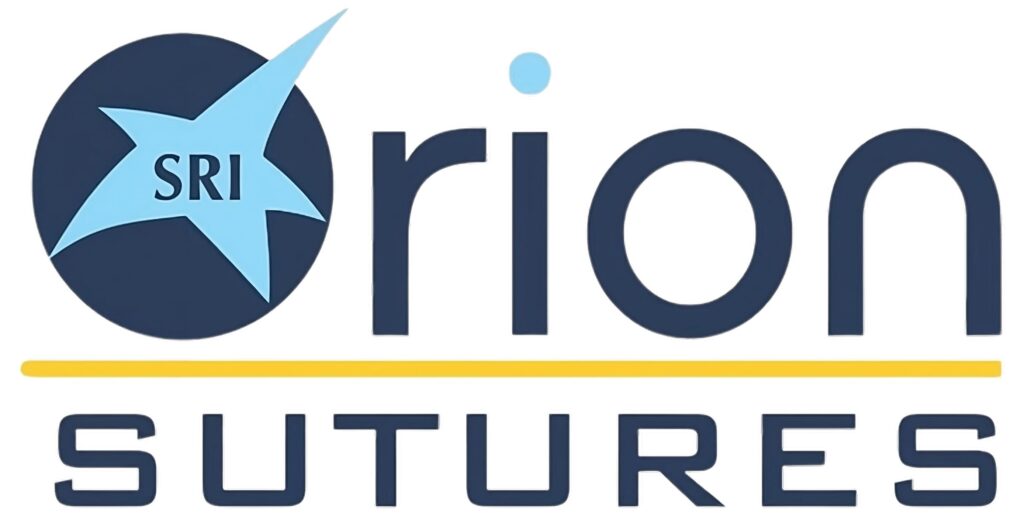When it comes to wound closure, the choice of surgical sutures is crucial. With various types of sutures available, like polyamide suture, it can be overwhelming to decide which one is best suited for specific procedures. This comprehensive guide discusses the different types of surgical sutures and their applications so you can make an informed decision when choosing the best option for your needs.
Absorbable vs. Non-Absorbable Sutures
Absorbable Sutures
Absorbable sutures are formulated to undergo degradation and assimilation by the body over time. These sutures are typically utilized for internal closures, as they negate the necessity for suture removal and minimize the risk of foreign body reactions. Some frequently used absorbable sutures include:
1. Polyglycolic Acid (PGA) Sutures
These synthetic sutures are known for their high tensile strength and low tissue reactivity. PGA sutures are commonly used in general surgery, gastrointestinal surgery, and gynaecological procedures.
2. Poliglecaprone Sutures
Also known as Monocryl, these sutures are a blend of glycolide and epsilon-caprolactone. They offer excellent handling properties, low tissue drag, and predictable absorption. Poliglecaprone sutures are ideal for subcuticular closures and soft tissue approximation.
3. Polydioxanone (PDO) Sutures
PDO sutures are strong, monofilament sutures that provide extended wound support. They are frequently used in cardiovascular, orthopaedic, and plastic surgery procedures.
Non-Absorbable Sutures
Non-absorbable sutures are designed to provide long-lasting support and are not absorbed by the body. They are typically used in areas where permanent wound support is required or in superficial skin closures. Some common non-absorbable sutures include:
1. Polyamide Sutures
Polyamide sutures, also known as nylon sutures, are synthetic monofilament sutures that offer high tensile strength and excellent knot security. They are often used in skin closure and cardiovascular procedures.
2. Polypropylene Sutures
Polypropylene sutures are synthetic monofilament sutures with exceptional tensile strength and low tissue reactivity. They are commonly used in cardiovascular, orthopaedic, and ophthalmic surgeries.
3. Silk Sutures
Silk sutures are braided, natural protein fibers that provide excellent handling properties and knot security. They are often used in general surgery, gastrointestinal surgery, and dental procedures.
Factors to Consider When Choosing Surgical Sutures
Tissue Type
Different tissues require different types of sutures to ensure optimal healing. For example, absorbable sutures are ideal for internal tissues, while non-absorbable sutures are better suited for external skin closures.
Wound Healing Time
Consider the expected healing time of the wound when choosing a suture. Absorbable sutures are ideal for wounds that heal quickly, while non-absorbable sutures provide long-lasting support for wounds requiring extended healing.
Patient Factors
It’s essential to consider the patient’s overall health, age, and potential risk factors for infection when choosing a suture. For example, diabetic patients or those with compromised immune systems may benefit from antibacterial sutures.
Surgeon Preference
Ultimately, the choice of suture may come down to the surgeon’s personal preference and experience. Some surgeons prefer the handling properties of specific sutures or may have more experience using certain suture types in specific procedures.
Polyamide Nylon Sutures in India
India is a notable producer and provider of top-notch polyamide nylon threads used in medical settings. These threads are renowned for their exceptional strength, secure knots, and minimal tissue reactivity, rendering them a perfect selection for numerous surgical interventions. Polyamide nylon sutures in India are obtainable in a range of dimensions and configurations to meet the diverse requirements of medical experts globally.
Conclusion
In summary, understanding the various classifications of surgical stitches and their uses is paramount when selecting the most suitable choice for particular operations. Elements such as tissue composition, duration of wound healing, patient variables, and surgeon inclination should all be taken into account when arriving at this determination. By opting for the appropriate suture category, you can guarantee ideal wound recovery and patient consequences.

